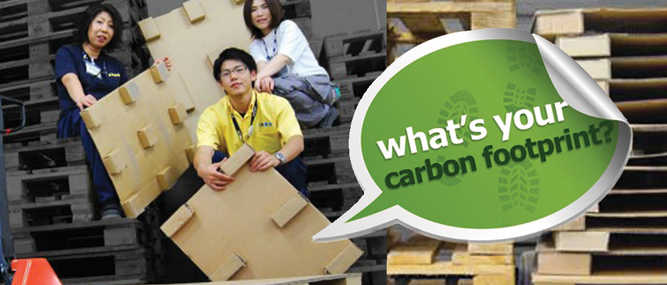Environmental responsibility is far too important of an issue to use as a pawn in marketplace battles between competing products or competing materials. It is important to identify the best choices, environmentally speaking, no matter what material. And companies need to be aware that environmental claims can be misleading things.
To these points, a new initiative from www.changethepallet.org, a group supporting conversion to paper pallets from wood pallets, claims that paper pallet usage will result in dramatic reductions in greenhouse gas emissions. As such, it is campaigning for U.S. retailers to accept paper pallets. The group reports having recently sent a letter to all 50 U.S. state governors, expressing frustration that roughly 90% of the country’s top 100 retailers do not accept paper pallets. Changethepallet.org believe that paper pallet usage would result in significant reduction in CO2 emissions. The group extrapolates from IKEA data that if U.S. industry switched to corrugated pallets, the greenhouse gas reduction would amount to 25 million metric tons (or more) by replacing wood pallets with corrugated. Lightweight paper pallets can translate into more freight for loads that weigh out, resulting in fewer loads and corresponding CO2 reduction.
While paper pallets could be an ideal solution for applications where benefits such as weight reduction are mission critical, these pallets are not used in many applications because they are not the best fit. When it comes to holding weight, taking fork tine abuse, encountering the elements, being used in racks and reuse in the supply chain, corrugated pallets may not stack up.
Applying IKEA’s data to the U.S. pallet system is somewhat of a stretch. IKEA is a global supply chain that benefits hugely from cube efficiency in shipping containers around the world. The lightweight, low profile nature and ease of custom sizing of corrugated pallets can add a lot of value for intercontinental or air shipments. Another note, the IKEA numbers aren’t just about paper pallets. The IKEA data includes the plastic Opti-Ledge devices as well as paper pallets, which IKEA considers in aggregate. A further point to consider, IKEA’s supply chain involved considerable repositioning expense for empty IKEA wood pallets, and the ability to bale empty cardboard pallets at retail was one of the key attractions for its strategy. Long distance repositioning isn’t as big of a deal in domestic supply chains using rental pallets or whitewood pallets that are taken to nearby depots for reissue.
In fairness to www.changethepallet.org, it seems poorly conceived that retailers should unilaterally ban the use of corrugated pallets, as is claimed. Obviously there are some applications where creative solutions involving paper pallets or other innovative pallet management approaches would be prudent for retailers to consider. But overall, there is a reason why wood is king. It remains the best platform in many cases for the lowest cost and environmental impact. There should be room for new ideas; we just don’t want the decisions to be based on a misguided environmental hypothesis.




